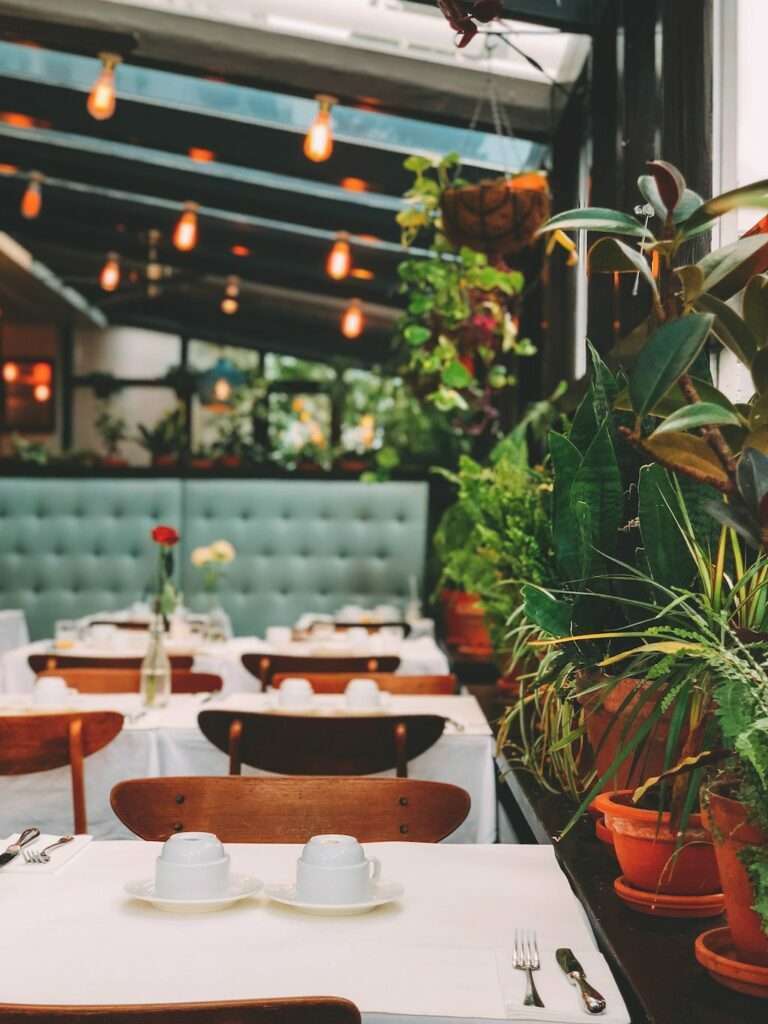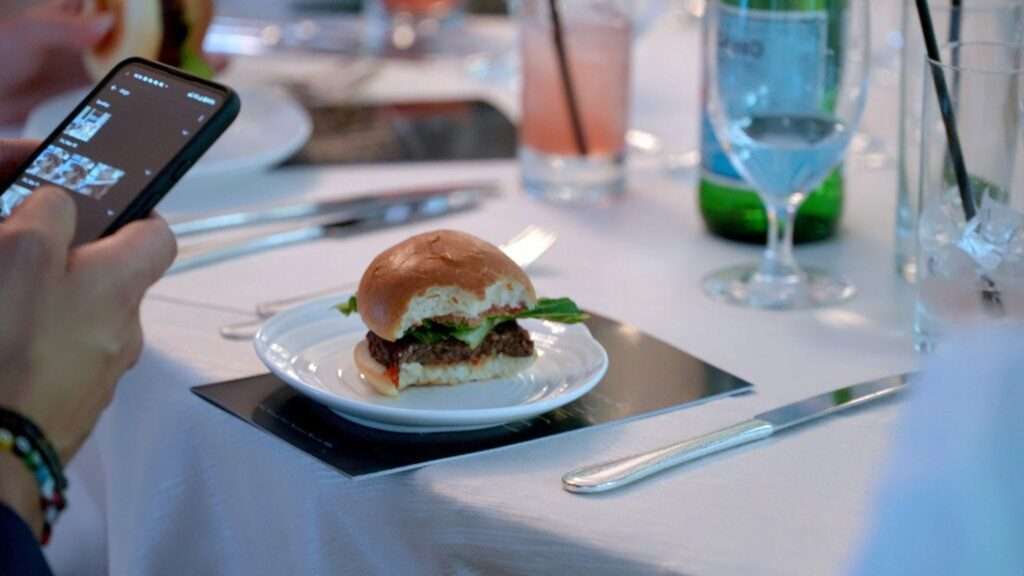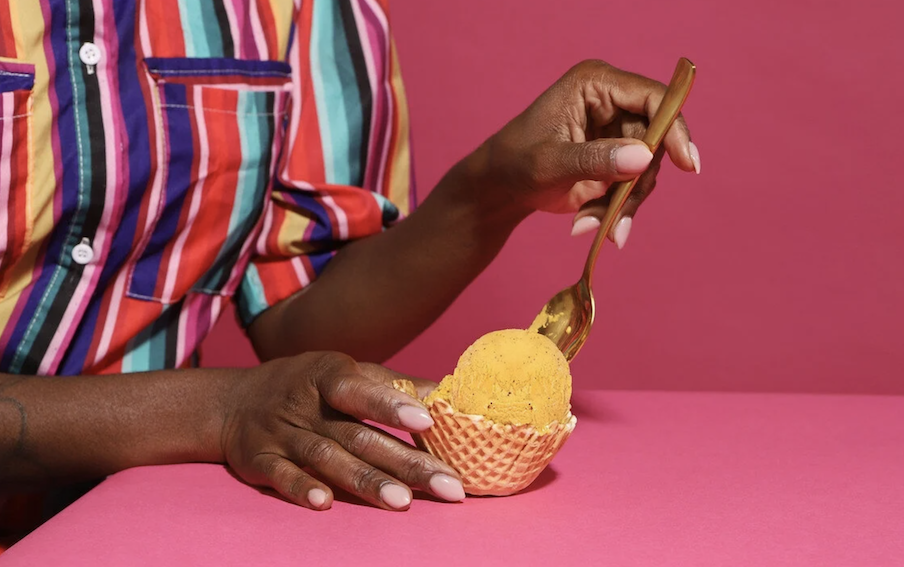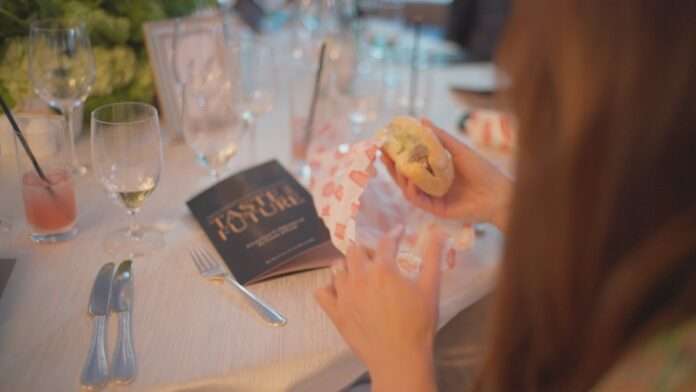The “future of food” is a popular mantra for the times as food tech companies and farmers alike aim to fix a system that has been cracking at the seams for decades. But what does it all actually taste like?
Last month, on an early spring afternoon, I was seated inside the Four Seasons Hotel in Beverly Hills for a lunch dubbed “Taste the Future: A Luncheon Celebration of the Future of Food.”
The lunch, sponsored by SOSV and Apeiron Investment Group, was showcasing a number of brands, predominantly plant-based, as well as those in the more novel animal-free sector, using precision fermentation, for example, to turn microbes into dairy or egg whites — no cows or hens needed.
Tasting the future
The menu was the handiwork of popular chef Matthew Kenney, whose plant-based creations can be found at restaurants and hotels around the world. The courses intermingled with folksy chats by the event’s hosts, two of the most anticipated — musician Questlove and actor Uma Thurman — were absent due to Academy Award duties just a few days away (Thurman presented and Questlove found himself a winner at the most inopportune moment, just after Will Smith’s infamous slap).
Company founders and industry leaders introduced their offerings over the noise of tables clamoring with influencer chatter, but they managed to explain a bit about their stories, the tech, the taste, and the benefits. But mostly, the tech.

Perfect Day stands out; the company is producing both milk and not milk at the exact same time. It’s the poster brand for precision fermentation — turning microbiota into animal protein to build dairy-identical whey that is used in cheese, milk, and ice cream. There are no cows involved, beyond, I’m assuming, some inspirational pictures and screensavers on display in the company’s Bay Area laboratories.
Making milk without cows isn’t exactly new. The dairy-free plant-milk sector is booming with options (although, they could be whittled down to just oat milk and most people wouldn’t mind). But Perfect Day didn’t want to use plants. It wanted dairy milk and all its applications, just not the cow.
People love dairy — cheese is often cited as one of the reasons people don’t go vegan. Whether it’s logical or moral to drink dairy has been elbowed aside for thousands of years as humans developed a taste for cow’s milk. Agriculture and infrastructure owe much to our love for dairy — we settled down as soon as possible to build our lives around cows.
It’s not just the hard-to-explain concepts like Perfect Day’s dairy. Some of the brands use far simpler ingredients and techniques like Abbott’s Butcher, which served its vegan whole-food plant-based meat in tacos. And Grounded Foods, which makes a cheesier-than-cheese-cheese from hemp and cauliflower.
There are lots of reasons companies are working to eliminate animal products, chief among them is the climate impact. The Good Food Institute co-founder and executive director Bruce Friedrich was on hand to explain this. Animal agriculture produces about 15 percent of all greenhouse gas emissions. (By comparison, aviation and maritime emissions are less than 3 percent combined.)
Animal agriculture is also a resource drain, using up land, water, grains, and energy for a lopsided caloric trade; it takes about 25 calories to produce just one calorie of beef compared to one calorie of corn. Protein conversion efficiencies by calories show about 31 percent for eggs and 3 percent for beef, according to recent research. Chicken production consumes energy in a 4:1 ratio to protein output; beef requires an energy input to protein output ratio of 54:1. Lamb is nearly as high at 50:1, milk at 17:1, and eggs, 26:1.

Covid also underscored the range of health risks that come from consuming animal products. It’s not just the pandemic that’s linked to animals, but other viruses and deadly bacteria like E. coli and salmonella as well as antibiotic resistance, among others. There are the other longstanding health risks that consuming animal products bring such as high cholesterol and heart disease—the latter is still the number one killer in the U.S.
For many, though, the reason for replacing animal products is ethics. More than 60 billion animals are raised for food every year, and trillions — trillions! — more are pulled from the oceans via fishing operations linked to plastic pollution, high rates of human trafficking, slavery, and corruption. Research continues to point to animal sentience across all species, and as the younger generations, in particular, seek out companies that are more aligned with their worldviews and ethos, they’re also prioritizing food that doesn’t take a life.
These are all legitimate reasons to want to replace animals. But creatures of habit as we human animals are, it’s no small task. The food system is complicated; much of it is buoyed by subsidies that go directly to animal agriculture. There are regulations and red tape for one of the “future’s” biggest promises of animal-free animal food: cultivated meat. There is also the public perception problem — the pervasive “it’s fake” attitude, or the fears that leaving milk and meat off the plate is unhealthy, unsafe.
Once, at a child’s birthday party here in Los Angeles amid a group of progressive creatives, as is commonplace in this town, the topic of lab-grown meat came up and I watched a woman grow so visibly outraged by the mere concept, which she labeled poisonous and experimental pseudoscience, that she stood up in disgust, threw down her napkin, and walked away.
But the future of food is not all happening in a lab.
The night before this lunch, I found myself at another Matthew Kenney event. This one was at his most popular Los Angeles establishment, Plant Food and Wine in Venice. That event was sponsored by Seeds of Wellness. It’s a chia seed company that prides itself on its pristine agricultural practices, working with farmers in South America who produce this staple, ancient food using holistic farming implements that also nod to their ancestry.
“Small but mighty,” is what Dr. Wendy Bazilian, the nutritionist on hand that evening, called the seeds. For the unfamiliar, chia seeds are tiny, about the size of a poppy seed. But they’re packed with good stuff: heart-healthy fiber and omega fats, protein, antioxidants. It’s one of those foods to grab if you plan to be stranded on a desert island, certainly, but it has real-world applications, too, especially amid our ongoing health crisis and a sea of foods that are barely more than empty calories.
As I sat at lunch the next day being served Perfect Day’s cheese that was made in a lab, NotCo’s AI-developed burgers, and Impossible Foods’ ‘bleeding’ meat thanks to its novel use of heme, I couldn’t help but think about the dinner the night before, too.

The dinner at Kenny’s restaurant incorporated chia into every dish, mainly the company’s chia milk. It was in a divine creamy soup, a smooth polenta, and a rich ice cream. It was all fairly simple, preparation techniques that are as old as the grain itself. And hundreds of years ago, the South Americans harvesting and consuming chia didn’t likely see it as a replacement for anything, just another source of healthy, versatile food.
It seemed, at first, like a contrast to the luncheon menu — we had to sign a waiver upon entry because some of the foods have not yet received federal approval.
But it soon became quite clear that there’s a through-line here, whether it’s an ancient grain or a genetically programmed yeast. All of these foods are aiming to connect us to what we eat in important ways — reconnect us, rather, to the ways we used to value food. Mindless consumption is both the driver and consequence of our current food system. For decades, we’ve not thought often enough about what we’re eating or why. Call it apathy or existential dystopian dread, perhaps. But we’ve resigned ourselves to seeing food as a byproduct of supermarkets, forgetting the organic roots of all that we put into our bodies and everything that entails.
Whether chia seeds or cell-based meat, it seems undeniable that the visionaries behind this booming future of food movement are out to fix our most fundamental food crisis: detachment.

I left the lunch early, needing to pick up my eight-year-old daughter from school. I tucked a neatly wrapped Questlove Impossible Foods cheesesteak into my purse to try later (it was, by far, the tastiest item on the menu, by the way).
Usually, my daughter has piano lessons on Thursdays, but her teacher was out that week, so we decided to go for ice cream instead — a fun treat on a warm spring afternoon. As we sat in the school parking lot deciding where to go, it suddenly dawned on me that we were just a few minutes’ drive away from five ice cream shops with dairy-free options (most of the shops were all vegan).
My daughter stumbled through all of them — we’re regulars at most — giving each hefty consideration, unsure which one she was in the mood for on that particularly warm afternoon.
After her careful deliberation, a decision. I started us out to a place that makes deliciously creamy dairy-free ice cream out of another ancient food: corn. It turned out that both the history and the future of food were only a ten-minute drive away.
Related on Ethos:


